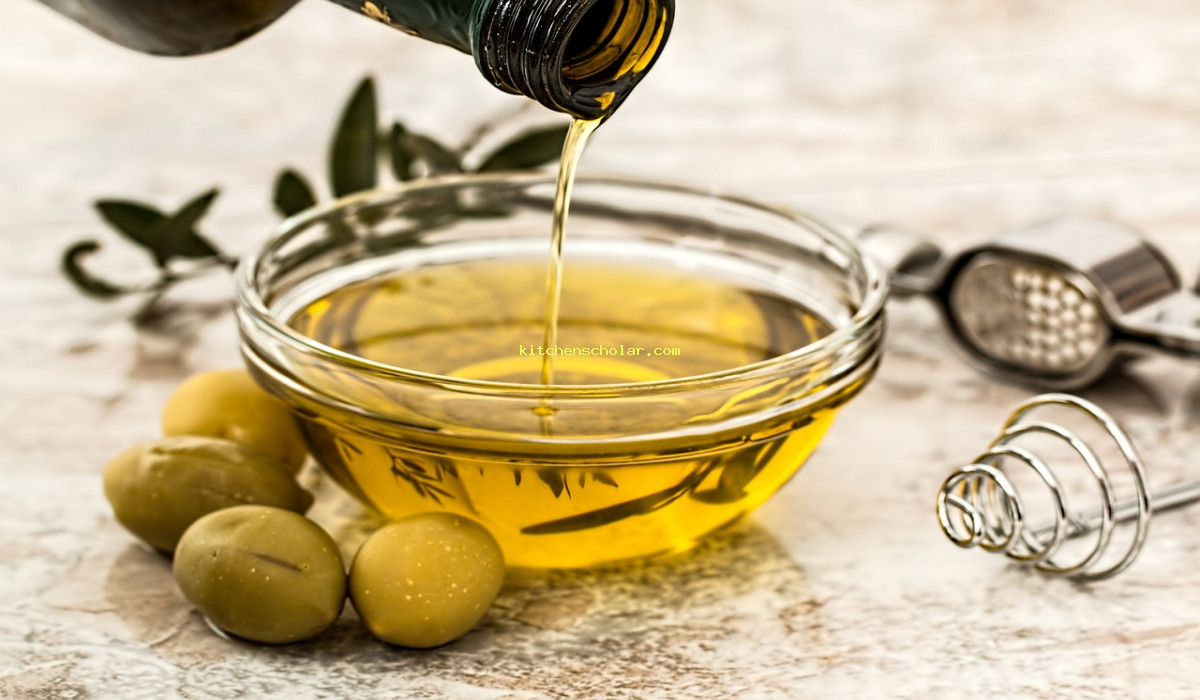Discover How a Kitchen Faucet Actually Works – Insights from a Kitchen Scholar. Discover how a kitchen faucet works with Kitchen Scholar!
Discover How a Kitchen Faucet Actually Works
We break down the inner workings of this essential kitchen tool in simple terms. Follow along and become an expert in no time. No need for complicated jargon here. Let us guide you through the mechanics of your faucet in a natural, easy-to-understand way. Check us out now!
Discover How a Kitchen Faucet Actually Works – Insights from a Kitchen Scholar. an expert in Discover How a Kitchen Faucet Actually Works – Insights from a Kitchen Scholar
The Ultimate Guide to Choosing the Perfect Kitchen Faucet | Step-by-Step: Easy Installation
Discover How a Kitchen Faucet Actually Works – Insights from a Kitchen Scholar The Ultimate Guide to Choosing the Perfect Kitchen Faucet | Step-by-Step: Easy Installation Video Discover How a Kitchen Faucet Actually Works – Insights from a Kitchen Scholar
How a Kitchen Faucet Works: A Comprehensive Guide for Kitchen Scholars
Discover How a Kitchen Faucet Actually Works
Kitchen faucets are an essential fixture in any kitchen, providing a steady supply of water for cooking, cleaning, and other household needs. But how exactly do they work? In this informative blog post, we’ll delve into the inner workings of a kitchen faucet, from its main components to the different types available on the market. Whether you’re a curious kitchen scholar or a homeowner planning a kitchen renovation, this guide will give you a better understanding of how your kitchen faucet operates.
Understanding the Basics of a Kitchen Faucet
A kitchen faucet consists of various parts that work together to provide a steady stream of water. The main components include the spout, which delivers water, the handles or knobs that control the water flow and temperature, and the valves that regulate the water flow. Kitchen faucets also come in different styles and features, such as single handle, double handle, pull-out, and pull-down, making them suitable for various kitchen needs.
Exploring the Inner Workings of a Kitchen Faucet:
The Main Components and How They Work
1) The Spout:
The spout is the part of the faucet that directs the flow of water out of the fixture. It is connected to a water supply line through a shank, a hollow metal pipe that channels the water from the plumbing pipes to the faucet. As the primary water outlet, the spout plays a crucial role in delivering water to the sink and ensuring efficient water flow.
2) Handles or Knobs:
The handles or knobs attached to the faucet serve as the control mechanism for the water flow and temperature. For a standard double-handle faucet, one handle is used to turn the water on and off, while the other controls the temperature by moving the stem, which connects the handle to the faucet’s valves. For single-handle faucets, a lever or dial is used to control both the water flow and temperature.

3) Valves:
The valves are responsible for regulating the water flow in and out of the faucet. The hot and cold water valves are responsible for controlling the temperature, while the mixer valve blends the hot and cold water to achieve the desired temperature. Most modern faucets use cartridge, ball, or ceramic disc valves, which are more durable and reliable than traditional compression valves.
4) Sprayers and Pull-Out/Pull-Down Features:
Many modern kitchen faucets come with sprayers and pull-out or pull-down features Discover How a Kitchen Faucet Actually Works, which add convenience and functionality to the fixture. These features allow you to extend the spout to reach hard-to-clean areas or spray water more effectively. They also come in handy when filling large containers or washing bulky items in the sink.
Types of Kitchen Faucets:
Exploring Your Options
1) Single Handle Faucets:
Single handle faucets are a common choice for kitchen sinks, thanks to their convenience and ease of use. These faucets have a single handle that controls both the water flow and temperature, making it easier to adjust the water to the desired temperature. They are also ideal for sinks with limited space, as the single lever occupies less space than two separate handles.
2) Double Handle Faucets:
Double handle faucets have two separate handles for controlling the water flow and temperature Discover How a Kitchen Faucet Actually Works. They are a more traditional option and provide more precise control over the water temperature. However, they require more space on the sink and are usually more expensive than single handle faucets.
3) Pull-Out Faucets:
A pull-out faucet has a sprayer feature that allows you to pull the spout out of the fixture for easier cleaning and filling purposes. The pull-out feature is usually integrated into the spout, making it a more compact option than a separate sprayer.
4) Pull-Down Faucets:
Similar to pull-out faucets, pull-down faucets have a sprayer feature that allows you to pull the spout down to extend its reach. This feature is useful when you need to fill tall containers or clean large objects in the sink.
5) Commercial-Style Faucets:
Commercial-style faucets are gaining popularity in residential kitchens, thanks to their sleek and professional look. These faucets have a high arched spout and a pull-down sprayer, making them ideal for heavy-duty tasks in the kitchen. They also come with advanced features such as touchless technology and multiple spray modes.
How to Maintain Your Kitchen Faucet:
Proper Care for Longevity
1) Routine Cleaning:
To keep your kitchen faucet in top shape, regular cleaning is crucial Discover How a Kitchen Faucet Actually Works. Wipe down the fixtures with a soft cloth and mild soap to get rid of any buildup. Avoid using harsh chemicals that can damage the faucet’s finish.
2) Check for Leaks:
Regularly inspect your faucet for any leaks and address them promptly Discover How a Kitchen Faucet Actually Works. Leaks not only waste water but can also cause structural damage to your kitchen cabinets and sink.
3) Replace Valves and Cartridges:
Over time, valves and cartridges can wear out, causing reduced water pressure and temperature control issues. Have them replaced by a professional plumber to ensure proper function.
4) Lubricate Moving Parts:
If your faucet handles are stiff or difficult to maneuver Discover How a Kitchen Faucet Actually Works, lubricating the moving parts with plumber’s grease can help. This will make turning the knobs or handles smoother and easier.
In Conclusion:
Become a Kitchen Scholar with Your Knowledge of Kitchen Faucets Discover How a Kitchen Faucet Actually Works.
Now that we’ve explored the inner workings and different types of kitchen faucets, you are equipped with the knowledge to choose the right faucet for your kitchen and maintain it for optimal performance. Remember to choose a faucet that suits your needs and budget, and regularly clean and maintain it for longevity.

And with their vast array of features and styles Discover How a Kitchen Faucet Actually Works, kitchen faucets have come a long way from being a simple household fixture to an essential element in modern kitchen design.
Discover How a Kitchen Faucet Actually Works
Discover how a kitchen faucet works with Kitchen Scholar! We break down the inner workings of this essential kitchen tool in simple terms. Follow along and become an expert in no time. No need for complicated jargon here. Let us guide you through the mechanics of your faucet in a natural Discover How a Kitchen Faucet Actually Works, easy-to-understand way. Check us out now!. faucet Discover How a Kitchen Faucet Actually Works – Insights from a Kitchen Scholar
How does a kitchen faucet work?
A kitchen faucet works by accessing the plumbing system to deliver water to your sink Discover How a Kitchen Faucet Actually Works. When you turn on the handle or lever Discover How a Kitchen Faucet Actually Works, it allows the water to flow through the faucet’s spout. The water flows through pipes and valves to reach the kitchen faucet, which is then released onto your sink.
What are the different types of kitchen faucets?
There are various types of kitchen faucets, including single-handle, double-handle Discover How a Kitchen Faucet Actually Works, touchless, and pull-down or pull-out faucets. Single-handle faucets have one lever or knob to control both temperature and water flow, while double-handle faucets have separate controls for hot and cold water.
Touchless faucets use motion sensors to turn on and off the water flow Discover How a Kitchen Faucet Actually Works, while pull-down or pull-out faucets have a detachable sprayer head for added flexibility in cleaning. You can choose the type of kitchen faucet that best suits your needs and preferences.
What are the benefits of a kitchen faucet with a high arc spout?
A kitchen faucet with a high arc spout offers several benefits Discover How a Kitchen Faucet Actually Works, such as improved functionality and convenience. The high arc spout allows for more space to wash larger items, making it easier to fill and clean pots and pans. It also provides better clearance for taller items Discover How a Kitchen Faucet Actually Works, giving you more flexibility in using your sink.
Additionally, the high arc spout can create a more modern and streamlined look in your kitchen. It can also be more ergonomic, as it reduces the need to bend or strain while washing dishes or filling containers.
How do I troubleshoot a leaky kitchen faucet?
If your kitchen faucet is leaking, there are a few troubleshooting steps you can try before calling a plumber. First, check if the handle or valve is loose and tighten it if necessary. You can also inspect the O-rings and seals to see if they need to be replaced.
If the leak persists, you may need to replace the entire faucet. You can also consult the manufacturer’s instructions or contact their customer service for further assistance.
Is a kitchen faucet easy to install?
The installation process of a kitchen faucet can vary depending on the type and model you choose. However, most modern faucets come with detailed instructions and may only require basic tools and plumbing knowledge.
If you are unsure or uncomfortable with installing a kitchen faucet yourself, it is best to hire a professional plumber for a safe and proper installation. Improper installation can lead to leaks and other issues, so it’s important to make sure it is done correctly.
